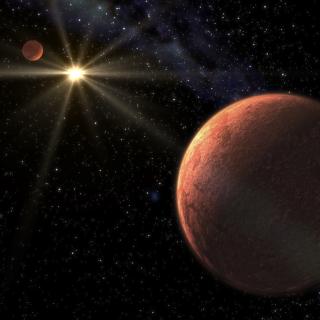Bibcode
Probst, Rafael A.; Milaković, Dinko; Toledo-Padrón, Borja; Lo Curto, Gaspare; Avila, Gerardo; Brucalassi, Anna; Canto Martins, Bruno L.; de Castro Leão, Izan; Esposito, Massimiliano; González Hernández, Jonay I.; Grupp, Frank; Hänsch, Theodor W.; Kellermann, Hanna; Kerber, Florian; Mandel, Olaf; Manescau, Antonio; Pozna, Eszter; Rebolo, Rafael; de Medeiros, José R.; Steinmetz, Tilo; Suárez Mascareño, Alejandro; Udem, Thomas; Urrutia, Josefina; Wu, Yuanjie; Pasquini, Luca; Holzwarth, Ronald
Bibliographical reference
Nature Astronomy
Advertised on:
2
2020
Citations
38
Refereed citations
34
Description
Laser frequency combs (LFCs) are well on their way to becoming the next-generation calibration sources for precision astronomical spectroscopy1-6. This development is considered key in the hunt for low-mass rocky exoplanets around solar-type stars whose discovery with the radial-velocity method requires cm s-1 Doppler precision7. In order to prove such precise calibration with an LFC, it must be compared to another calibrator of at least the same precision. Being the best available spectrograph calibrator, this means comparing it to a second—fully independent—LFC. Here, we report on a test in which two separate LFCs were used to simultaneously calibrate an astronomical spectrograph. Our installation of two LFCs at the ultra-stable two-channel spectrograph HARPS allowed characterization of their relative stability and consistency in calibration at the highest available level. Although the test was limited in time, the results confirm the 1 cm s-1 stability that has long been anticipated by the astronomical community.
Related projects

Very Low Mass Stars, Brown Dwarfs and Planets
Our goal is to study the processes that lead to the formation of low mass stars, brown dwarfs and planets and to characterize the physical properties of these objects in various evolutionary stages. Low mass stars and brown dwarfs are likely the most numerous type of objects in our Galaxy but due to their low intrinsic luminosity they are not so
Rafael
Rebolo López